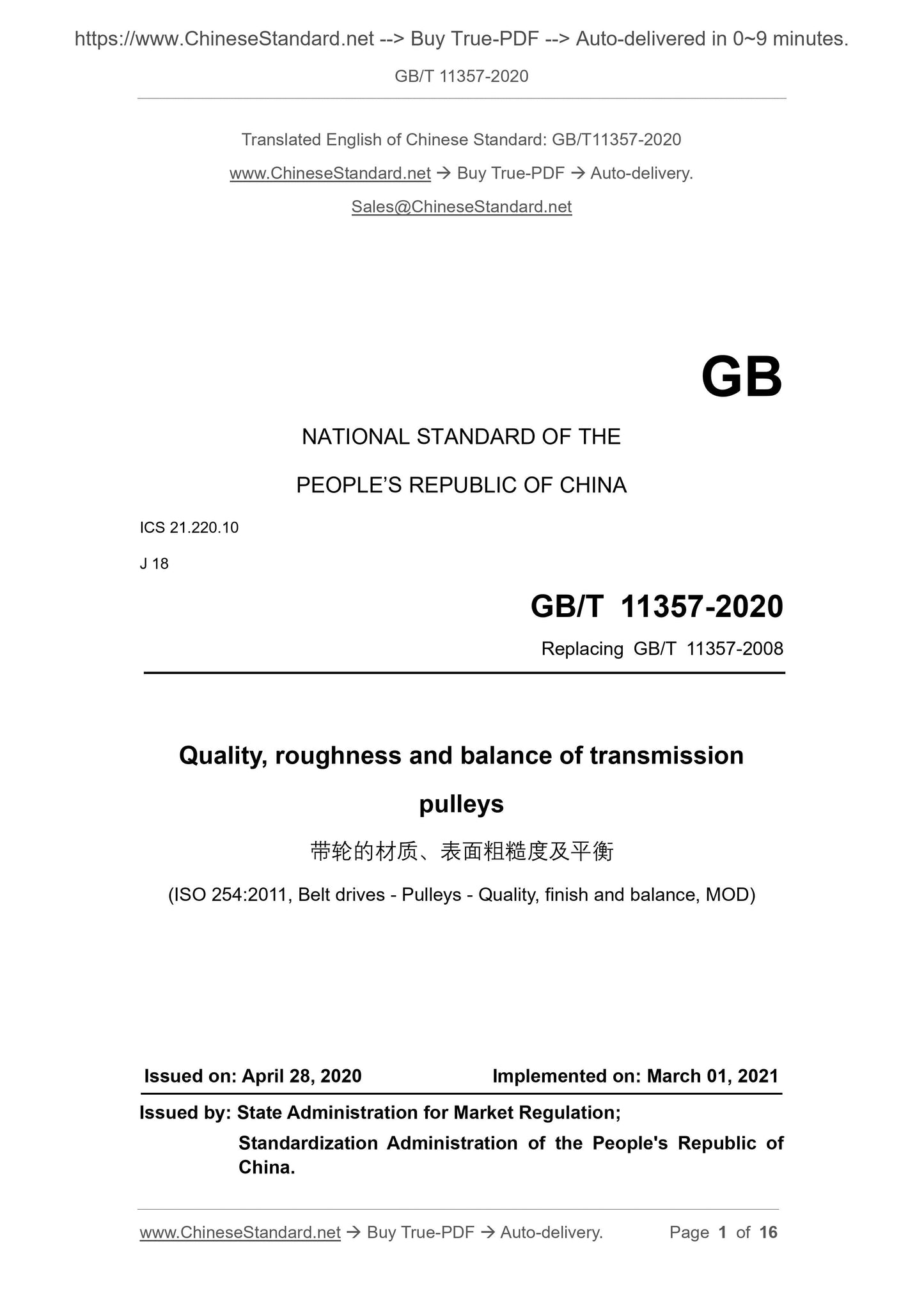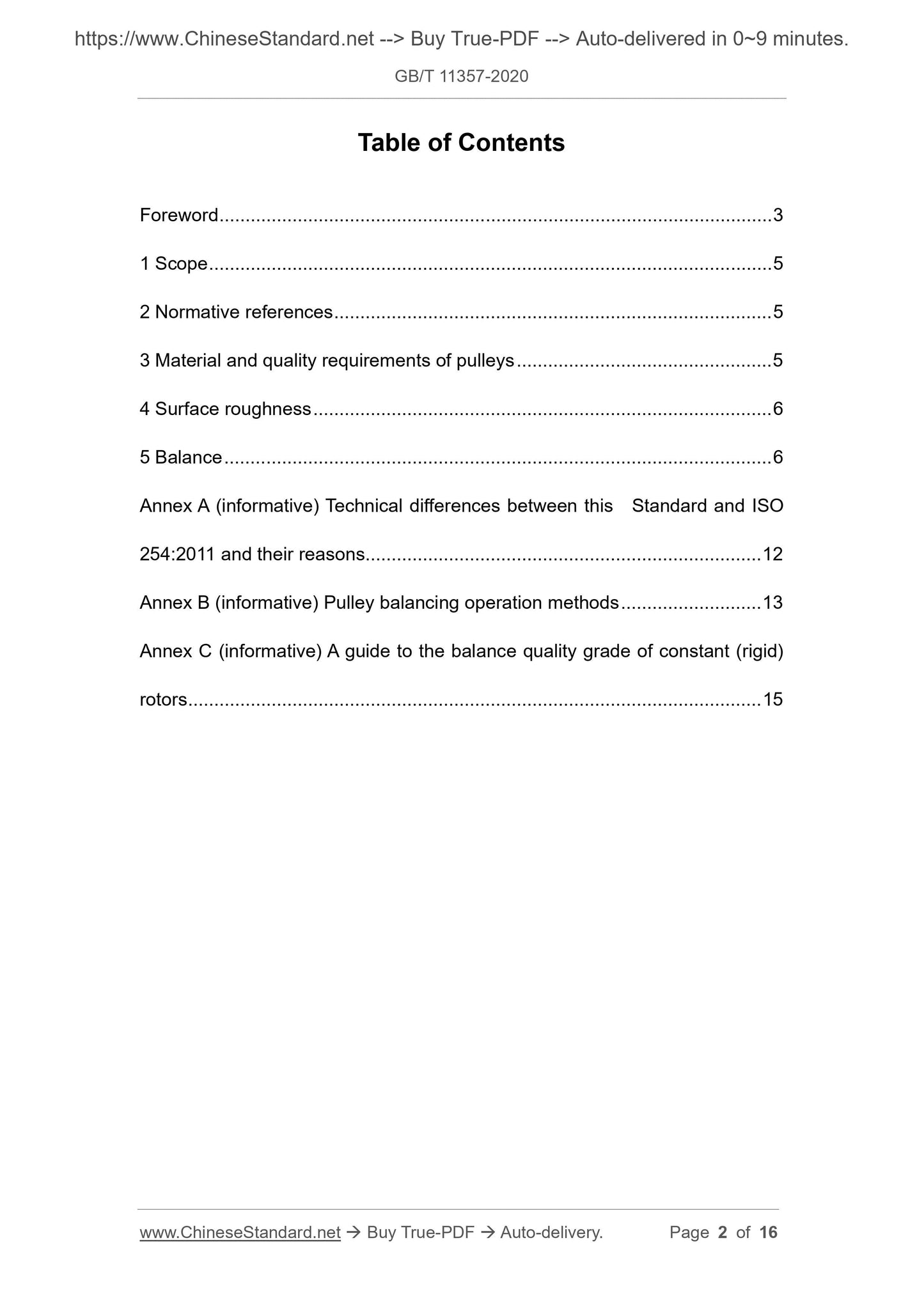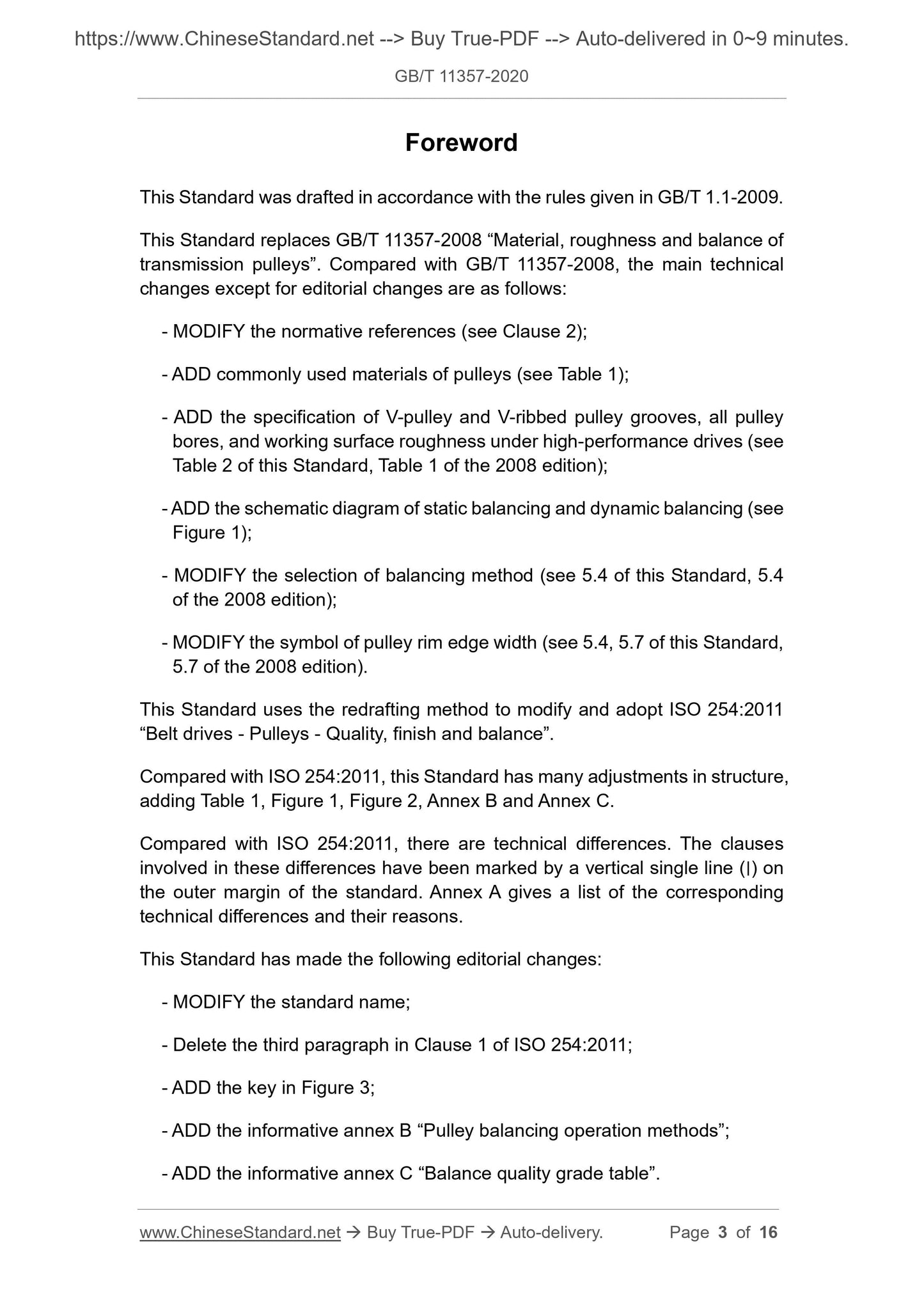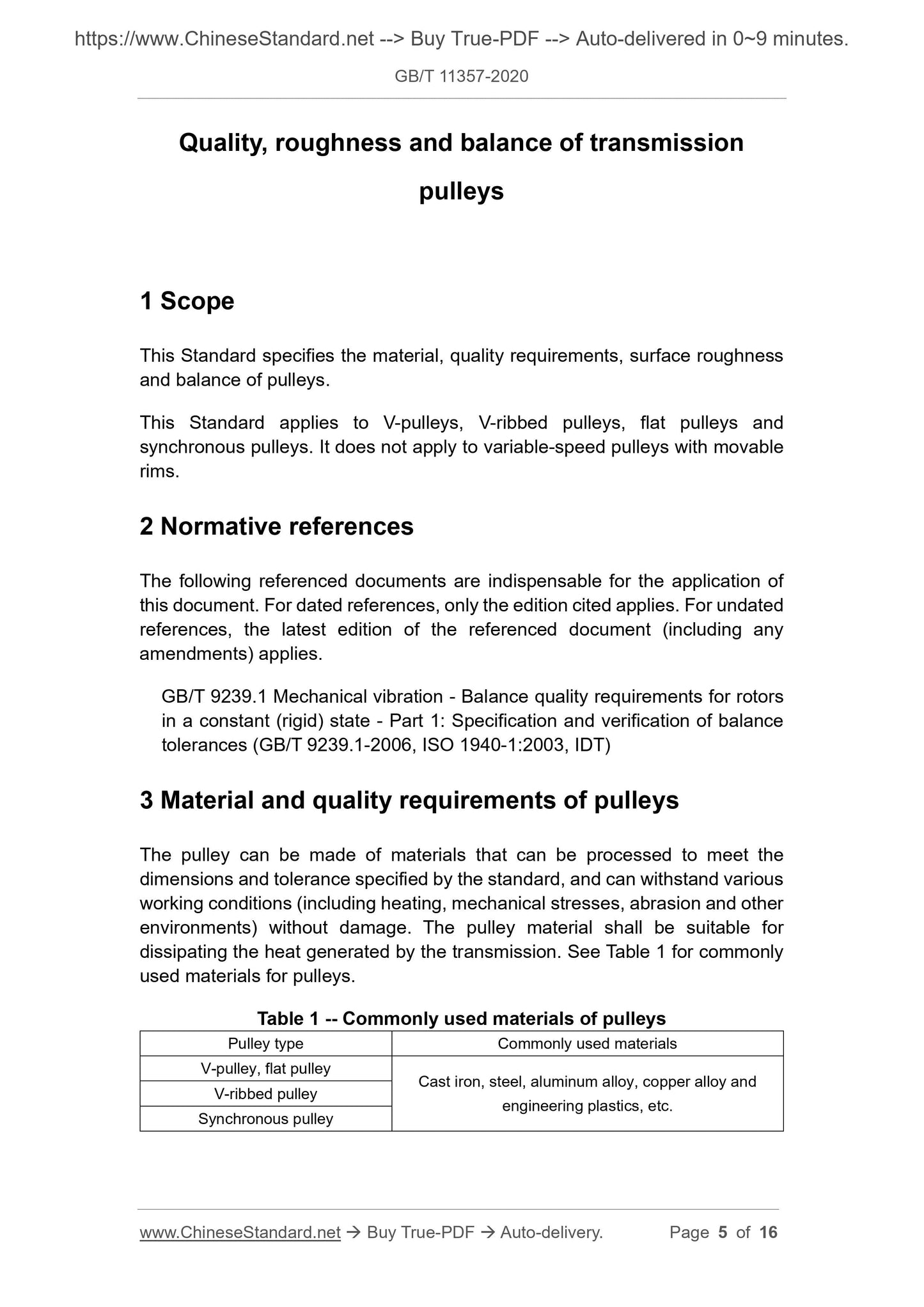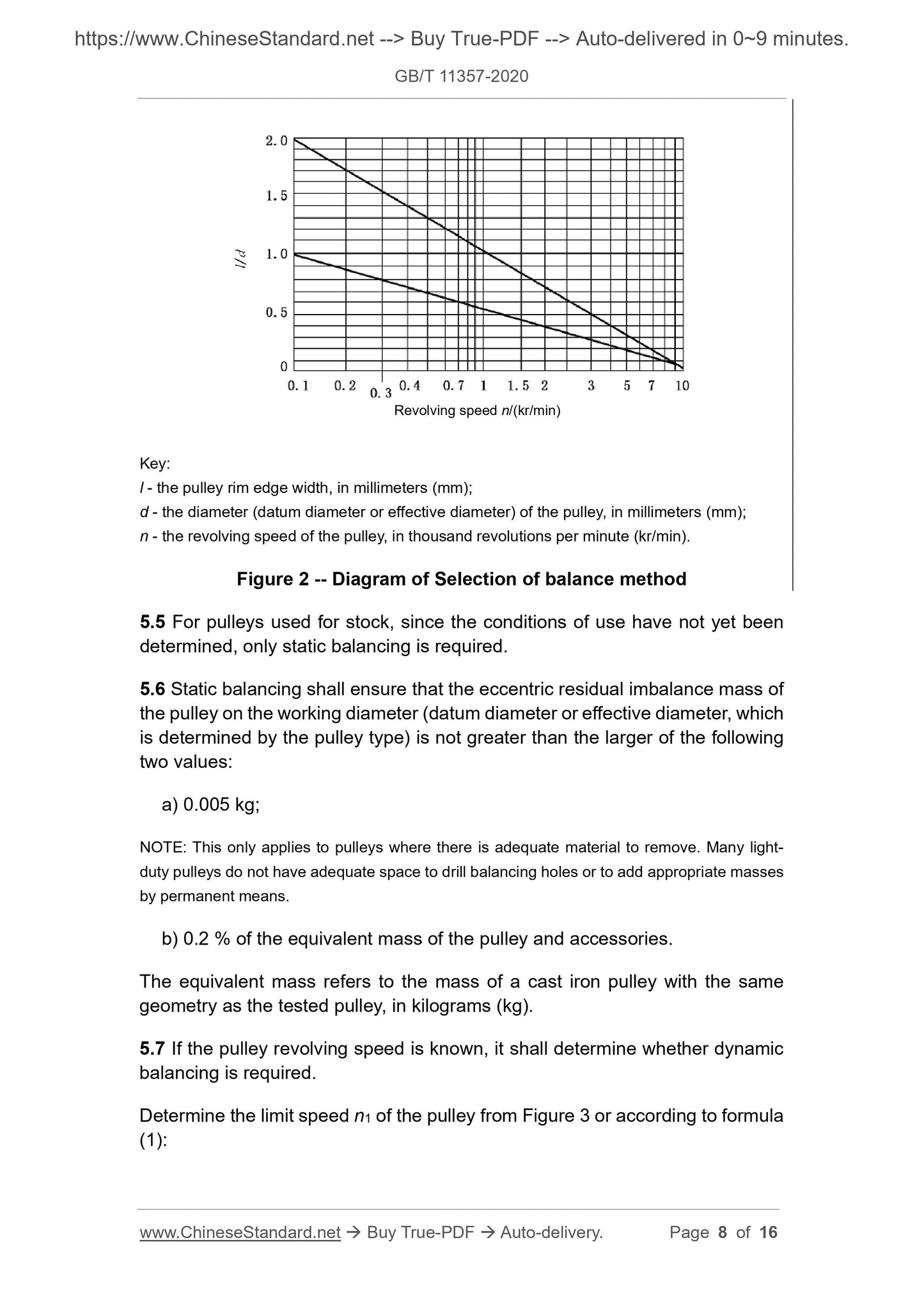1
/
of
5
www.ChineseStandard.us -- Field Test Asia Pte. Ltd.
GB/T 11357-2020 English PDF (GB/T11357-2020)
GB/T 11357-2020 English PDF (GB/T11357-2020)
Regular price
$185.00
Regular price
Sale price
$185.00
Unit price
/
per
Shipping calculated at checkout.
Couldn't load pickup availability
GB/T 11357-2020: Quality, roughness and balance of transmission pulleys
Delivery: 9 seconds. Download (and Email) true-PDF + Invoice.Get Quotation: Click GB/T 11357-2020 (Self-service in 1-minute)
Newer / historical versions: GB/T 11357-2020
Preview True-PDF
Scope
This Standard specifies the material, quality requirements, surface roughnessand balance of pulleys.
This Standard applies to V-pulleys, V-ribbed pulleys, flat pulleys and
synchronous pulleys. It does not apply to variable-speed pulleys with movable
rims.
Basic Data
| Standard ID | GB/T 11357-2020 (GB/T11357-2020) |
| Description (Translated English) | Quality, roughness and balance of transmission pulleys |
| Sector / Industry | National Standard (Recommended) |
| Classification of Chinese Standard | J18 |
| Classification of International Standard | 21.220.10 |
| Word Count Estimation | 11,147 |
| Date of Issue | 2020-04-28 |
| Date of Implementation | 2021-03-01 |
| Issuing agency(ies) | State Administration for Market Regulation, China National Standardization Administration |
Share
